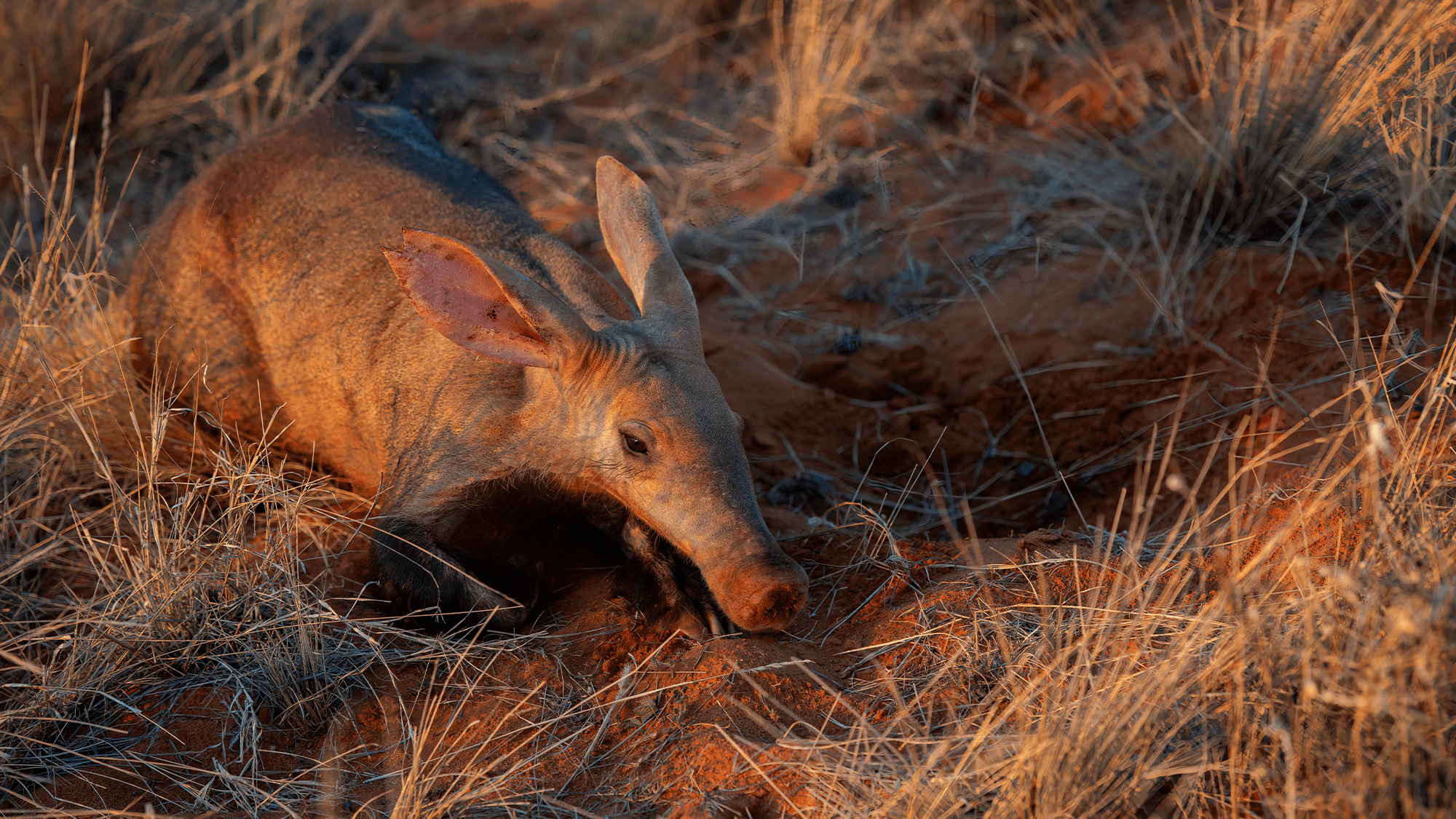

Aardvarks (Orycteropus afer) are a crucial part of the ecosystem in sub-Saharan Africa. They eat termites that can destroy human-built structures and are ecosystem engineers like beavers. They build large tunnels underground and these burrows can provide shelter that protects other animals. Their poop can also offer clues to how this elusive species is impacted by climate change.
[Related: Humans are now the African savannah’s top predator.]
In a study published December 13 in the journal Diversity and Distribution months of poop samples revealed that the aridification–or drying and heating–of the aadvarks’ landscape is isolating the animals from one another. The study’s authors believe this could have implications for the species’ long-term survival.
“Everyone had heard of aardvarks and they are considered very ecologically important but there has been little study of them,” study co-author and Oregon State University wildlife biologist Clint Epps said in a statement. “We wanted to see if we could collect enough data to begin to understand them.”
Aardvarks are burrowing nocturnal mammals that can weigh up to 180 pounds. They have long snouts that they used to dig out ant and termite hills. They are primarily found throughout the southern two-thirds of Africa. Aardvarks are often compared to pigs and the South American anteater, but they are not related to them. Their closest living relatives are golden moles, manatees, and elephants.
They are categorized as a species of least concern by the IUCN Red List, partially due to the broad range of ecosystems that they can live in. However, little is known about their current population trends or their real distribution across the landscape since they are difficult to study.
“During times of rapid environmental change, evaluating and describing changes in the landscape where a species lives is important for informed conservation and management decisions,” study co-author and Oregon State University wildlife geneticist Rachel Crowhurst said in a statement.
Aardvark DNA has been examined in the past for studies on how mammals evolved, but never using wild aardvark populations. Eps and Crowhurt believe that aardvarks are understudied because they are nocturnal, difficult to trap, and live in low densities across large and often remote landscapes.
They also bury their poop. Epps learned how to recognize aardvark tracks and how to find their buried fecal matter while working as post-doctoral researcher nearly two decades ago in Tanzania. He returned to Africa for six weeks in 2016 to see if he could still spot the signs of aardvark digging and track them through the bush to find the buried treasure.

“I wanted to work on a system that was understudied, where anything I learned would likely be truly new information to the scientific community,” Epps said. “I also wanted to work over large landscapes, on foot, alone or with a friend or with guards when needed, in protected areas, with minimal logistical support and little cost.”
In this new study, the team used the genetic information aardvark poop samples as a way to better understand the range of where they live. They surveyed eight protected and four privately owned areas in South Africa, two protected areas in Eswatini, and one location in Kenya. In total, they collected 253 fecal samples and analyzed 104 high quality samples for their genetic information.
Next, they used the genetic information to make inferences about where the aardvarks were distributed and how they moved across the landscape. For instance, if the genetic testing revealed that fecal samples collected in different spots all came from the same aardvark, the team used that to determine the scale of an individual animal’s movement.
The genetic information suggested that there are three regional divisions of aardvarks in South Africa. The animals in the western, central, and eastern regions of the country were also somewhat isolated. Individuals were detected at various locations separated by up to 4.3 miles. Their home ranges may be larger than previously determined, particularly in more arid areas where food may be more scarce.
[Related: Rare parasites found in 200 million-year-old reptile poop.]
Closely related aardvarks were detected as far as 27.3 miles apart and individuals found less than 34 miles were more genetically similar. The team also found that aardvarks may disperse up to 34 miles from where they are born. The genetic differences between individuals was larger when the landscapes between the animals were more dry and hot, which suggests that the movement throughout those arid areas may be restricted.
“Our initial findings suggest that climate change will increase habitat fragmentation and limit gene flow for aardvarks, particularly where precipitation is expected to decrease and temperature increase,” Epps said. “With aridity expected to increase in southernmost Africa under most climate change scenarios, the need for further research is clear.”
The team plans to perform genomic analysis on new samples and conduct field work across a wider area.
